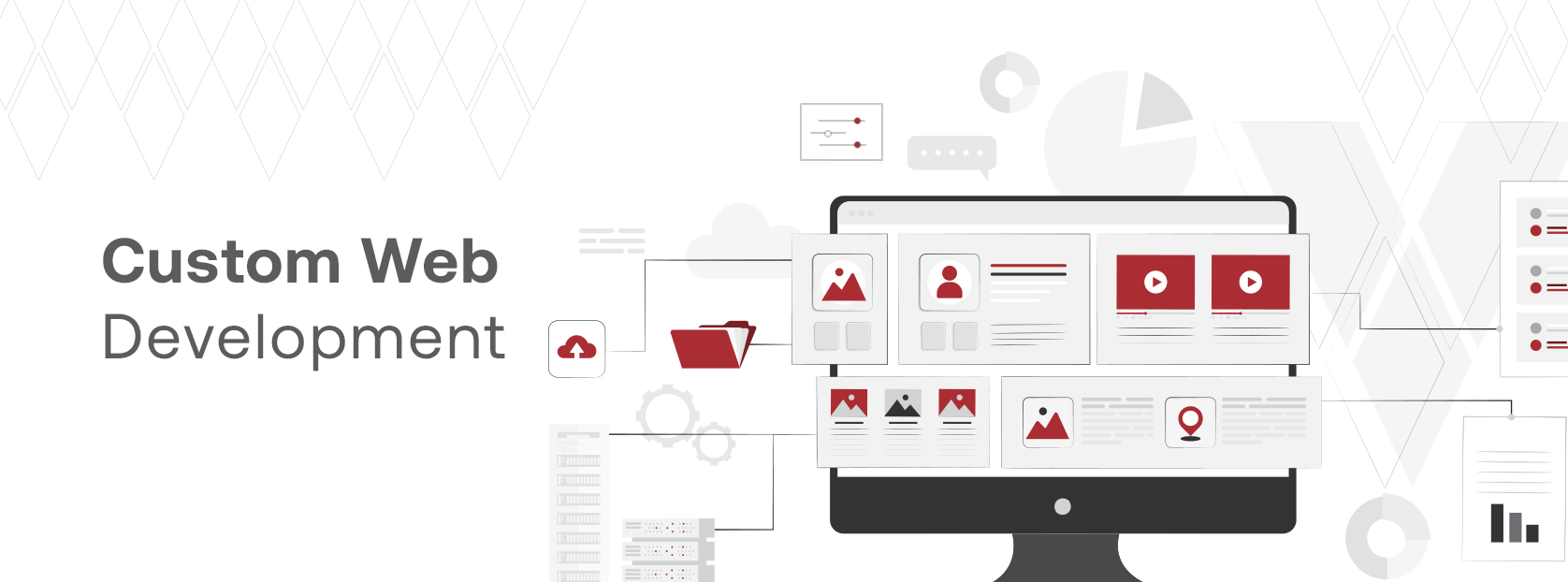
Discover Agile Development: Core Principles, Benefits, and Impact
Agile development prioritizes people and relationships over tools and processes and is a project management methodology. The Agile Manifesto, published in 2001, offers four key ideals and twelve guiding principles for agile development.
Agile methodology example includes a team that uses Scrum to organize tasks, have regular sprint reviews, and change priorities depending on its input. This method enables efficient and flexible project management, resulting in high-quality results that meet customer needs.
The 4 Values of the Agile Manifesto
The Agile Manifesto's four key values are:
- Individuals and The interactions: This approach prioritizes people and teams over tools and processes. Achieving success requires having the proper team and keeping effective communication.
- Working Software: Focuses on producing functioning software above comprehensive documentation and on working software to clients and using their input to improve.
- Customer Collaboration: Shifts from inflexible contracts to ongoing development with active client feedback, guaranteeing that the product satisfies their requirements.
- Responding to Change: Promotes flexibility over static roadmaps, enabling teams to successfully adjust to changing requirements and priorities.

Importance to Agile Development
Agile is a software development process that aims to address the demand for flexibility while also delivering realistic products. This strategy frequently necessitates a cultural shift within businesses, stressing the clean delivery of individual software components rather than the entire solution.
Agile development is critical for ensuring that teams execute projects on schedule and under budget and for improving communication between the development team and product owner. Agile frameworks rely on regular, time-limited iterations known as sprints to enable incremental improvements.
Furthermore, the Agile development process reduces the risks associated with complicated projects by allowing teams to make rapid and easy adjustments without affecting the overall project timeline.
History of Agile Development
Agile development originated in the 1990s and early 2000s as a response to the limits of traditional software development approaches. Here's a quick overview:
Early Influences (1970s–1980s)
Early software engineering approaches investigated concepts like iterative development and gradual delivery. Barry Boehm established the Spiral Model in 1986, emphasizing iterative development and risk management, which laid the framework for Agile principles.
Manifesto for Agile Software Development (2001)
The Agile movement was officially launched when 17 software developers gathered in Snowbird, Utah, to investigate novel software development methodologies. They created the Agile Manifesto, which focuses on four fundamental values and twelve principles, including flexibility, teamwork, and customer satisfaction.
Agile approaches
Following the Agile Manifesto, various distinct approaches appeared, including:
- Scrum: Established in the early 1990s, Scrum stresses iterative development and frequent feedback via sprints.
- Extreme Programming (XP): Created by Kent Beck in the late 1990s, it emphasizes technical quality, continuous feedback, and secure engagement with clients.
- Kanban: Originally used in Toyota's production system in the 1940s, Kanban was modified for software development in the mid-2000s, with a focus on analyzing work and improving flow
- Widespread Adoption (2000s-Present): Agile principles have become widespread across industries due to their efficacy in handling complicated projects. Agile has subsequently grown, with frameworks such as SAFe (Scaled Agile Framework) and LeSS (Large Scale Scrum) catering to the needs of larger enterprises.
Agile development is still evolving, with an emphasis on collaboration, adaptability, and customer-centric techniques to meet the demands of current software development.

The 12 Agile Principles
The Agile Manifesto was released in 2001 in response to the need for a new method to assist organizations in becoming more adaptable and responsive to change. Dissatisfied with existing approaches, the Agile designers developed a manifesto based on twelve guiding principles.
1. Deliver Early and Frequently to Keep Customers Happy
According to the original wording of the first Agile principle, Our highest priority is to satisfy the customer through early and continuous delivery of valuable software. However, it is perfectly relevant in fields other than software development.
Applying this principle will boost your process's agility and allow you to respond to changes more quickly. On the other hand, your consumers will be pleased because they will receive the value for which they are paying more frequently.
2. Accepting Shifting Demands
However, change requests should be embraced even in the last stages of project execution. The second Agile principle is that teams should welcome changes to requirements, even late in development. Agile techniques leverage change to benefit customers and increase competitiveness.
Agile teams try to accept uncertainty and recognize that even a delayed modification can still provide significant value to the end client. Because of Agile's iterative process, teams shouldn't have any trouble responding to changes in a timely manner.
3. Deliver Value
The third Agile project management philosophy is to "provide functional software often, from just a couple of weeks to a few months, with an affinity for the shorter timescale." The primary goal is to lower the batch size required for processing operations.
This notion became important because considerable documentation was required in the planning phase of software development around the end of the twentieth century. Adopting this idea shortens the planning stage, leaving a longer period for actual development. In other words, your team will be able to plan more quickly and efficiently.
4. Eliminate Silos in Your Project
Agile promotes the use of cross-functional teams to improve communication among project stakeholders. According to the original language, "business people and developers must collaborate daily throughout the project."
In a knowledge-based context that is not clearly tied to software development, you can easily alter the word "developers" to "engineers" or "designers" or whichever fits your circumstance. The idea is to achieve alignment between those who produce value and those who plan or sell it. Through this approach, you can make internal collaboration seamless and boost process performance.
5. Develop Projects with Driven Individuals
The fifth Agile principle is that projects may be completed more quickly and with higher quality by decreasing micromanagement and motivating team members. As the original wording of the Agile manifesto advises, you must "create projects around driven individuals."
The logic behind the fifth of the Agile principles is that by reducing micromanagement and empowering motivated team members, projects will be completed faster and with better quality. Give them the support and environment they need and trust them when it comes to getting the job done.
The second line in this principle is particularly crucial. If you don't trust your team and keep even the most minor decisions in your firm centralized, you'll simply limit their engagement. As a result, individuals will never experience a feeling of belonging to the project's mission, and they will not realize their full potential.
6. Face to Face Communication is Better
Face-to-face interactions are the most effective and efficient approach to communicating knowledge among development teams. This idea was especially pertinent and realistic in 2001.
Speaking in person shortens the time between asking a question and receiving a response. However, in today's globalized work environment, this presents a significant limitation.
7. Working Software is a Key Indicator of Progress.
The seventh of the Agile basic principles is quite straightforward. It makes no difference how many working hours you've put into your project, how many problems you've fixed, or how many lines of code your team has created. You're in trouble if your job does not meet your customer's expectations.
8. Maintain a Consistent and Sustainable Work Rhythm
This notion can be expressed precisely as "Agile processes promote sustainable development." The sponsors, developers, and users should be able to keep up a steady pace indefinitely."
Logically, while implementing Agile, your goal is to minimize overburdening and improve your work processes so that you can deliver to the market regularly and adjust to change without requiring personal heroics from your team members.
Agile makes sure that teams have a regular and reasonable workload, minimizing burnout and increasing long-term production. This balanced strategy enables teams to innovate continuously while also efficiently responding to market demands. Sustainable practices foster a healthy work environment in which team members can thrive while consistently delivering high-quality results.
9. Continuous Improvement Enhances Agility
The architects of the Agile Manifesto claim that "ongoing commitment to technical excellence and effective design increases agility." In a development context, this idea enables teams to produce not only functional software but also a stable, high-quality product. As a result, code modifications will have less of a negative influence on bugs and malfunctions.
10. Simplicity is the Key
The original text of this principle can be a little misleading, as it states, Simplicity-the art of maximizing the amount of work that is not done-is essential. However, it is quite practical.
Why waste time on complicating something that can be done easily? Customers do not compensate you for the time and effort you put in. They are purchasing a solution to a specific problem that they face. Keep this in mind when implementing Agile, and avoid doing something just to do it.
11. Organized Teams Generate More Value
Once again, we see that motivated teams create the best value for the consumer when given freedom. The 17 Agile fathers claimed that "the most effective architectures, demands, and designs arise from self-organized teams" when discussing this principle. If you have to "push them forward" with your team, you may not be ready for Agile or need to adapt your leadership style.
12. Reviewing and Modifying Work Methods for Efficiency
Finally, we reach the last of the Agile management principles. It relates to assessing your performance and identifying areas for improvement. According to the comprehensive version of the concept, "occasionally, the entire team reflects on how to improve efficiency and then adjusts its behavior accordingly.
Implementing the 12 principles of Agile will help you develop an Agile organization that can assist you with:
- Becoming more adaptable so you can respond to the new changes in the process.
- Reducing waste in your system to make your Agile workflow and the end solution more cost-effective.
- Focusing on early value delivery to gain timely market feedback while achieving a faster ROI for your product/service.
- Creating a good working environment where everyone feels appreciated and so better contributes to meeting the customer's needs.
Key Components of Agile Methodology
Let’s get into the components that make up the whole agile methodology and help you pick up pace with agile development:
Iterative Development.
It includes collaborating with smaller, more manageable project components known as iterations. Iterative development emphasizes cycle development, user feedback, and updates. To create a potentially shippable product, it must be implemented in Agile techniques such as Scrum.
Incremental Delivery
This involves delivering a product in incremental, functional increments instead of just one complete deployment. Each step adds value while allowing stakeholders to utilize and assess the product gradually.
Flexibility and Adaptability
Agile methodology enables flexibility in reacting to evolving demands and client needs. Agile teams prioritize adapting to change over following a strict plan. They may adapt and change their course based on input and shifting priorities. Regular testing and evaluations result in higher-quality code and increased user satisfaction.
Agile Software Development Life Cycle (SDLC)
The Agile Software Development Life Cycle (SDLC) includes a " Tracking and Feedback" phase, which collects user feedback and monitors system performance to ensure continual improvement.
The Agile Software Development Life Cycle (SDLC) consists of four phases: planning, development, testing, and review. These phases are all completed in iterative cycles to respond to changes and constantly improve the product. Agile Software Development Methodology stresses flexibility, cooperation, and reactivity, making it an excellent choice for projects whose needs are likely to change.
Further Stages of Agile SDLC
- Concept: Stakeholders and product owners define the project's scope, priority, costs, projected completion time, and supported features and requirements.
- Inception: The idea is to complete just enough work to help steer the team in the proper direction.
- Iteration: The application is developed and released to clients.The application is ready for the release.
- Maintenance: After the program has been put into production, the team continues to maintain it by correcting any defects that may arise.

Popular Agile Frameworks
Scrum, Kanban, and Lean are the three Agile frameworks that can be applied to software development and other sectors. Here is a detailed description of each of these models:
Scrum
Scrum is an organized structure that focuses on increasing efficiency through brief, time-limited iterations known as sprints. Sprints typically run one to four weeks and have specific start and end dates. Scrum teams organize and prioritize their work by creating a backlog of work items known as user stories. They also employ sprint planning, daily scrum meetings, sprint reviews, and retrospectives to keep themselves on track and improve.
Scrum makes it difficult to reprioritize work on short notice because it establishes a predetermined goal for each sprint. The Agile Scrum Master plays an important role in enabling the Scrum process and ensuring that the team follows Agile principles and can omit any obstacles that come along with it.
Kanban
A system based on an ongoing process that enables teams to respond to shifting priorities. Kanban teams portray each task as a card on a board, allowing them to visibly track progress. Kanban has no established responsibilities or team meetings, and it forecasts when work will be completed based on the average it requires to accomplish tasks.
Lean
Lean is a framework that aims to eliminate waste in both products and processes. Lean concepts include reducing waste, amplifying learning, making decisions as late as feasible, delivering as quickly as possible, motivating the team, and incorporating integrity and quality.
Benefits of Agile Development
“Vertex IT System( Software QA & Testing - Service - Vertex IT Systems) offers agile project management solutions, which give several benefits”,such as more flexibility, improved team cooperation, and faster delivery timeframes.
Here’s what you get from our agile development strategies:
- Satisfied clients
- Being adaptable
- Transparency
- Flexibility
- Faster time to market
- Management of risks
- Constant enhancement
- It targets users
- Foreseeable costs
- Quality
- Excellent product
- Improved productivity
- Increased client engagement and collaboration
- Improved teamwork and communication
- Increased team morale
- Iterative development
- Collaboration among stakeholders
- Visibility
- Better control
- Creating business value
- Early delivery using sprints
- Encouraging the Team
Challenges of Agile Development
Here is a summary of some common challenges addressed with the Agile process.
1. Evolving Requirements
A product's requirements or specifications may change from time to time. These modifications are often addressed, but if they occur toward the end of a sprint, they are deferred to the next sprint and create a burden for the programmers and testers. The testing team should assess risk and prioritize testing the most important functionality. Automation may be useful with regression testing to see whether other portions of the code are affected.
2. Insufficient test coverage
Continuous Integration (CI) and constantly changing objectives are common features of Agile testing. Due to shifting demands and continuous integration, Agile testers can miss out on key test cases. This can be handled by using Agile metrics to evaluate test coverage.
3. Delayed Feedback Cycle
During Agile testing, the feedback loop between testers and developers might be slow at times. This could be attributed to shorter sprints or continuous shipping of new code followed by continuous testing. Device wait periods might also cause delays in the feedback loop. Most companies with their own device libraries encounter this problem. Testers A, B, and C might need the same gadget for testing simultaneously. If Tester A uses the gadget, Testers B and C must wait until it becomes available.
4. Early Detection of Defects
Defects are often more difficult and costly to fix at a later stage in the development process. Defects are sometimes discovered during Agile testing, or even during production, making them extremely difficult to rectify. This difficulty can be solved by running a tool for static analysis on the source code, which can help you identify errors, programming developments, data type mismatches, and so on.
5. Postponing Crucial Tests
The Agile testing technique involves accomplishing a specific amount of work in a short period, known as sprints. Because these sprints are short, Agile testers postpone various non-functional tests, such as API testing, compatibility testing, cross-browser testing, and so on, due to time constraints and test case complexity. This may result in flaws that are difficult to debug later. To address this, the testing strategy should be updated at the end of each sprint to ensure that all necessary tests are complete.
As traditional software development approaches such as Waterfall and V-models become outmoded, many firms are adopting the Agile software development method. Agile testing is a component of agile software development. Though the Agile technique is generally known, it has significant problems that must be overcome. Insufficient test coverage, slow feedback, delaying essential tests, and other issues are major obstacles in the Agile process.
Agile vs. Traditional Methodologies
Agile emphasizes adaptability and flexibility, allowing for iterative enhancements during the project lifecycle instead of predictability. It adapts swiftly to modifications in requirements or market circumstances.
Traditional (Waterfall), on the other hand, uses a linear and sequential approach, with every stage (e.g., demands, creation, implementation, and testing) accomplished before proceeding to the next. Changes are difficult to apply after the project is started.
Development Approach
Agile development involves iterative processes, frequent feedback loops, and incremental releases. Work is broken down into small, manageable pieces (sprints or iterations), allowing for frequent review and adaptability.
Traditional: Prior to beginning construction, comprehensive design and planning are required. The whole project is pre-planned, leaving minimal possibility for alteration once development begins.
Customer Engagement
Agile encourages ongoing customer engagement throughout the development process, with regular evaluations and input sessions to verify that the product satisfies their requirements. Traditionally, customer interaction is restricted to the initial demands process and delivery itself, with little possibility for continued feedback.
Risk Management
Agile risk management involves iterative cycles, regular testing, and early completion of functional increments, enabling rapid identification and resolution of concerns. Traditional risk management involves prior analysis and planning, which could end up in late detection of difficulties if modifications or issues develop.
The Scope Of The Project:
Agile allows for the evolution of project scope and objectives, with the ability to modify in response to new needs or input from stakeholders. The scope is established at the outset, and adjustments are handled through official requests for modifications, which can be costly and time-consuming.
Conclusion
Agile methodology is a flexible, iterative software development technique that focuses on adaptation, collaboration, and continual improvement. Agile frameworks such as Scrum enable teams to adapt to changing needs of the project and produce value on a regular basis. Agile methodologies also allow teams to quickly adapt to customer needs and build an innovative culture.
Contact us today to learn more about our Agile services and how to improve your project!
FAQs
How is Scrum related to Agile?
Scrum is a unique Agile methodology that manages project work through fixed-length iterations known as sprints and roles such as Scrum Master and Product Owner.
What are the key principles of Agile development?
Prioritizing humans and interactions, creating working software, collaborating with customers, and adapting to change are all essential aspects of Agile development.
How does Agile improve software development processes?
Agile enhances software development by encouraging incremental progress, continuous feedback, and adaptability to changing requirements.
What is the agile development development?
Agile development is a method that emphasizes iterative progress, adaptability, and ongoing cooperation in order to build high-quality software.
Connect with Our Experts Now!
Schedule a CallLatest Blogs


Full Stack Development Services | Coming at GITEX 2024
Read More
Custom Web Development Services and Professional Solutions from Top Talent
Read More
9 Key Phases of Mobile App Development
Read More
